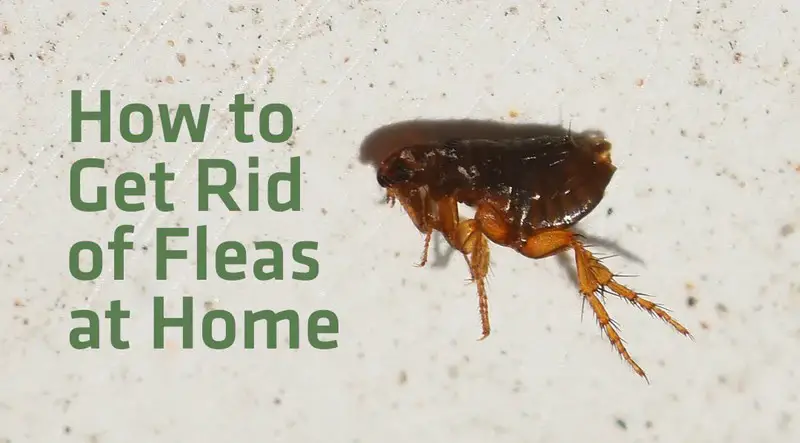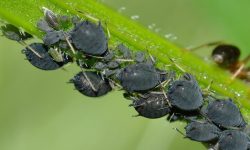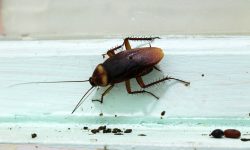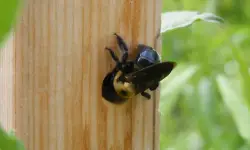Fleas are persistent and troublesome pests that can quickly take over your home, causing irritation for both you and your pets. These tiny insects multiply at an alarming rate, making it difficult to eliminate them once they establish a presence in carpets, furniture, and bedding. If left untreated, a minor flea problem can escalate into a full-blown infestation, leading to itchy bites, allergic reactions, and even the spread of diseases.
If you’re struggling with fleas, acting quickly is crucial to breaking their life cycle and preventing reinfestation. The good news is that with the right approach, you can successfully eliminate fleas and keep them from coming back.
In this guide, we’ll explore 10 proven tips on how to get rid of fleas in your house effectively, ensuring a flea-free environment for you and your furry companions.
Understanding the Flea Problem

Before tackling an infestation, it’s crucial to understand how fleas spread and why they are difficult to eliminate.
What Are Fleas?
Fleas are tiny, wingless insects that survive by feeding on the blood of animals and humans. They are highly adaptable and reproduce rapidly, which makes controlling an infestation particularly challenging. A single female flea can lay up to 50 eggs per day, leading to exponential population growth in a short period. Their small size and ability to jump long distances allow them to move easily between hosts, making them a persistent nuisance.
How Do Fleas Enter Your Home?
Fleas can enter your home through various means, with pets being the most common carriers. Dogs and cats can pick up fleas from outdoor environments, other animals, or contaminated areas. However, even homes without pets are not entirely safe—fleas can hitch a ride on human clothing, shoes, or secondhand furniture.
Once inside, fleas quickly establish themselves in carpets, upholstery, bedding, and even cracks in flooring. Their eggs and larvae can remain hidden for weeks, making infestations difficult to detect until the problem becomes severe. Since flea eggs can survive in the environment and hatch later, even after initial treatments, multiple intervention methods are often required to completely eradicate them.
10 Proven Tips to Eliminate Fleas
Start by Treating Your Pets
Fleas often infest homes by hitching a ride on pets, making pet treatment the first and most crucial step in eradicating them. Begin by consulting a veterinarian for recommended flea treatments such as topical spot-on applications, flea shampoos, or oral medications. Regular grooming, including frequent brushing and bathing with flea-repellent shampoos, helps to remove fleas and their eggs. Additionally, washing pet bedding, blankets, and soft toys in hot water can kill any remaining fleas and larvae. Maintaining a clean pet environment is essential for breaking the flea life cycle.
Vacuum Thoroughly and Frequently
Vacuuming is one of the most effective ways to remove fleas, their eggs, and larvae from carpets, rugs, furniture, and pet sleeping areas. A vacuum with a HEPA filter ensures that fleas and allergens are efficiently trapped. Pay special attention to crevices, baseboards, and under furniture where fleas may hide. Empty the vacuum canister or dispose of the bag immediately in a sealed plastic bag to prevent fleas from escaping and reinfesting your home. Regular vacuuming, especially during peak flea seasons, significantly reduces flea populations.
Wash All Fabrics and Linens
Fleas and their eggs can hide in fabrics, including clothing, bedding, and curtains. Washing all linens, including pet beds, throw blankets, and cushion covers, in hot water effectively kills fleas at all life stages. Using a dryer at the highest heat setting further ensures that fleas are eradicated. For items that cannot be machine-washed, consider using a steam cleaner to eliminate fleas without using harsh chemicals.
Use a Flea Spray or Fogger
Chemical treatments like flea sprays and foggers can help eliminate fleas at various life stages. Selecting a product containing an insect growth regulator (IGR) prevents flea eggs from hatching and developing into adult fleas. When applying flea treatments, carefully follow the manufacturer’s instructions, ensuring proper ventilation during and after use. Keep pets and children away from treated areas until the product has completely dried. Repeating the treatment as recommended helps prevent reinfestation.
Sprinkle Diatomaceous Earth
Diatomaceous earth (DE) is a natural, non-toxic powder that dehydrates fleas on contact. Food-grade DE should be lightly sprinkled on carpets, pet bedding, and floors where fleas are commonly found. Allow the powder to sit for at least 48 hours before vacuuming thoroughly. Regular reapplication may be necessary for severe infestations. While DE is safe for pets and humans, avoid inhaling the fine dust, as it can cause respiratory irritation.
Create a Flea Trap
Homemade flea traps provide an easy and cost-effective way to monitor and reduce flea populations. Fill a shallow dish with warm water mixed with dish soap and place it under a small lamp or nightlight. The heat and light attract fleas, causing them to jump into the soapy water, where they become trapped and drown. Setting up multiple traps in infested areas and checking them regularly helps gauge the infestation level and track progress.
Use Essential Oils as Natural Flea Repellents
Certain essential oils have flea-repellent properties and can be used as a natural alternative to chemical treatments. Oils like lavender, cedarwood, and eucalyptus are effective flea deterrents. Mixing a few drops of essential oil with water and spraying it around pet areas, carpets, and furniture can help keep fleas at bay. However, essential oils should never be applied directly to pets without consulting a veterinarian, as some oils can be toxic to animals.
Maintain a Clean and Clutter-Free Environment
A clean home plays a crucial role in flea prevention. Fleas thrive in dark, humid, and cluttered spaces, so keeping floors swept and mopped reduces their hiding spots. Regularly washing pet bowls, toys, and accessories further minimizes the risk of infestation. Reducing household clutter, especially in areas where pets spend time, makes it more difficult for fleas to establish themselves and multiply.
Treat Your Yard to Prevent Reinfestation
Outdoor areas can serve as breeding grounds for fleas, allowing them to reinfest your home repeatedly. Keeping your lawn trimmed and removing leaf piles, overgrown vegetation, and debris eliminates flea habitats. Beneficial nematodes, microscopic worms that feed on flea larvae, can be introduced into the soil as a natural flea control method. Additionally, spreading cedar chips around pet resting areas and garden beds helps repel fleas due to their natural insect-repelling properties.
Consult a Professional Exterminator
For persistent and severe flea infestations, seeking professional pest control services may be necessary. Exterminators use advanced treatments that effectively eliminate fleas from your home, including targeted chemical applications and heat treatments. They can also provide expert guidance on long-term flea prevention strategies. If home remedies and store-bought solutions fail to control the infestation, professional intervention ensures a more comprehensive and lasting solution.
Preventing Future Flea Infestations
Once you’ve eliminated fleas, it’s essential to take preventive measures to ensure they don’t return. Consistent efforts in pet care, household maintenance, and monitoring can help keep your home flea-free.
Regular Pet Care
Pets are the primary hosts for fleas, so keeping them protected is crucial:
- Use flea prevention treatments: Consult with your veterinarian to choose the best flea prevention method, such as topical treatments, oral medications, flea collars, or natural alternatives. Administer these treatments regularly as recommended.
- Brush and bathe pets frequently: Use a flea comb to check for fleas and remove any that may be present. Bathing pets with flea-repellent shampoos can help eliminate fleas before they spread.
- Keep pet areas clean: Regularly clean and disinfect pet bedding, toys, and crates to reduce the risk of reinfestation.
Maintain Household Cleanliness
Fleas and their eggs can survive in carpets, furniture, and other hidden areas, so keeping your home clean is vital:
- Vacuum regularly: Vacuuming removes flea eggs, larvae, and adult fleas from carpets, upholstery, and cracks in the flooring. Dispose of vacuum bags or empty canisters outside immediately to prevent fleas from escaping back into your home.
- Wash fabrics frequently: Wash pet bedding, blankets, and other fabrics in hot water to kill fleas and their eggs. Consider using a flea-repellent detergent or adding vinegar to the wash.
- Declutter your home: Fleas thrive in dark, hidden spaces, so reducing clutter can eliminate potential flea hiding spots.
Monitor Your Home
Even after treating your home and pets, fleas can return. Consistent monitoring is key:
- Use flea traps: Flea traps, such as light and sticky pad traps, help detect flea activity early. If fleas reappear, take immediate action.
- Inspect pets and furniture: Check your pets for excessive scratching, hair loss, or flea dirt (tiny black specks). Examine carpets, furniture, and cracks in flooring for flea eggs or larvae.
- Maintain your yard: Fleas can enter your home from outdoor areas. Mow the lawn regularly, remove excess debris, and consider using flea repellents in outdoor pet areas.
By following these 10 proven tips, you can effectively get rid of fleas in your home and prevent future infestations. Consistency is key—regular cleaning and preventive measures will help keep your home flea-free for good.






